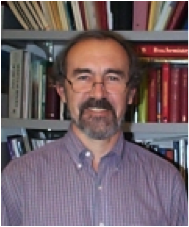David Atkinson, Ph.D.
Professor and Chair, Department of Physiology and Biophysics, Research Professor of Biochemistry

Direct Contact: atkinson@bu.edu
Publications Positions and Honors
The long standing objectives of my research are to provide the detailed structural and dynamic description of the plasma lipoproteins and apolipoproteins that is crucial to understanding the molecular mechanisms of such physiological processes as lipoprotein formation, receptor interactions, lipoprotein inter-conversions, and apoprotein exchange together with the changes in these characteristics that underlie the pathophysiology of atherosclerosis. Our research formed a component of a Program Project from its inception in 1980 and I led the Program from 2001, taking over from Dr. Donald Small. I was appointed to the Chair of the Department in 2005.
Building on initial training in diffraction methods and biophysics, I have maintained and expanded my expertise in state-of-the-art methods of molecular biophysics and structural biology including crystallography, electron microscopy/image processing, calorimetry and thermodynamics, circular dichroism, and molecular modeling/mechanics to probe the structure-function relationships of the lipoproteins and apolipoproteins. This includes a one year sabbatical at the MRC Laboratory of Molecular Biology, Cambridge, England developing electron microscopy.
Our work, over more than three decades, has focused on the structural and thermodynamic properties of specific lipoproteins (HDL and LDL), and apolipoproteins, particularly apolipopr
I have a long association with graduate and post doctoral training and the M.D./Ph.D. program at BUSM.otein A-1. We derived the first structural description of HDL, nascent HDL and LDL using x-ray methods. Our mutation studies of the conformation, stability, and lipid binding properties have contributed to providing a framework for understanding the molecular properties of apoA-1. Furthermore, our studies of peptides representing segments of apoA-1, together with “idealized” sequence models, have provided information on the role of specific residues and domains, and their interactions in the structure and stability of apoA-1. Most recently, these studies have provided the first high relolution description of apoA-1 through the crystal structure of a C-terminally truncated form. For LDL, we pioneered the use of cryo-electron microscopy to study LDL structure and used mAb labeling to investigate the topology of apoB.